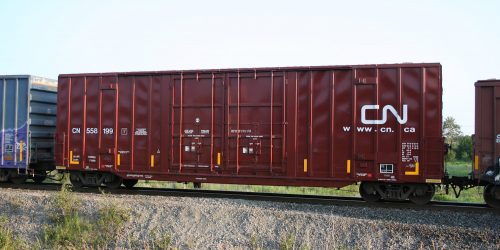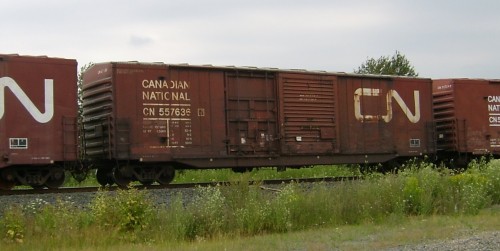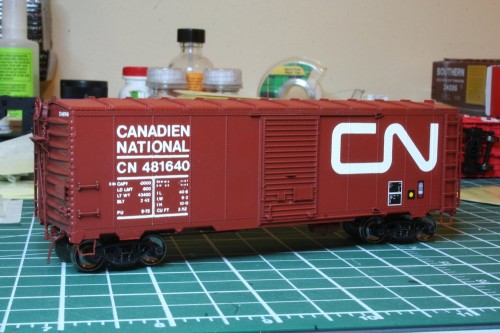CN 557417 is a 52′ inside length combination plug + sliding door boxcar built in the mid 1970s for lumber and forest products service. It’s part of a large group of such cars (740 cars built in three orders between 1973-1974), but its paint job is one of a kind.
This car was one of 4 boxcars painted by CN in 1984 as a promotion for the upcoming 1986 World’s Fair in Vancouver, BC, branded as “Expo86” by the event organizers. Each car was painted in a similar black and white scheme with 4 diagonal coloured stripes, although each of the 4 cars was in a different colour.
The four cars to be painted this way were:
CN 557417 – blue stripes (52′ combo-door boxcar)
CN 557420 – purple stripes (52′ combo-door boxcar)
CNIS 417093 – green stripes (52′ single-door boxcar)
CNIS 417225 – orange stripes (52′ single-door boxcar)
Also painted in the Expo86 scheme was SD40-2 5334 with multi-coloured stripes (yellow, green, blue and purple).
The model was built using a Kaslo Shops resin kit for a CN 52′ combo door boxcar which matches the prototype and painted and lettered using a decal set from Highball Graphics (this set appears to be now discontinued). This was a challenging paint job, requiring a lot of masking (including diagonal masking to paint the stripes) over the raised details of the car doors.
Since I’m modeling 1985, the car’s paint job is still pretty fresh so the car just received a clear coat and will remain un-weathered. Eventually the car will see service on my future layout hauling lumber, plywood and other forest products from mills on the CN beyond Hearst westbound via Oba or south to the United States via Sault Ste. Marie. It’ll be an eye-catching change from the regular CN brown boxcars hauling paper and lumber out of the north.






